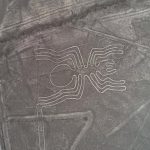The former president of Angola, José Eduardo dos Santos, who led the country for 38 years, died at the age of 79 this Friday, the Angolan government announced.
Former Angolan President José Eduardo dos Santos died on Friday, July 8, at the age of 79, at the Barcelona clinic where he had been hospitalized since he suffered a heart attack on June 23, the Government of the African nation announced on its website. From Facebook.
“The Angolan government informs with great pain and consternation of the death of José Eduardo dos Santos,” the brief message said, adding that the death of the man who led the country for 38 years had occurred late in the morning.
The Angolan Executive “bows, with the greatest respect and consideration” before this historical figure who, according to him, presided “for many years with clarity and humanism [los destinos] of the Angolan nation, in very difficult times,” the statement added.
A five-day period of national mourning has been declared from Saturday to honor his memory.
One of the daughters of the former president, Tchizé dos Santos, said that she wanted her father’s body to undergo an autopsy, “for fear” that the remains of the former Angolan head of state would be transferred to their country of origin.
The entry of the former president into intensive care, revealed by the press, has brought to light tensions within the family, especially between dos Santos’ wife, Ana Paula, and at least one of his daughters, Tchizé dos Santos, from 44 years.
This filed a complaint in Barcelona at the beginning of July and requested that an investigation be opened, among other things, for “alleged attempted homicide, failure to help a person in danger, injuries caused by serious negligence,” according to the two law firms that advise the daughter of the former Angolan president. According to one of her lawyers, she believes that his father’s wife, Ana Paula, and Dos Santos’ personal doctor are responsible for his deteriorating health.
A figure of independent Angola
José Eduardo dos Santos ruled Angola for 38 years and used oil profits to enrich his family, while his country remained one of the poorest in the world.
The former Marxist rebel left power in May 2017 and his legacy did not survive his departure. His daughter Isabel, nicknamed the “princess” and appointed in 2016 to lead the national oil company Sonangol, is now persecuted by the Justice and faces a series of investigations for corruption. Her son Filomeno has been in prison since 2019, also for corruption.
When José Eduardo dos Santos came to power in 1979, Angola had been mired in civil war for four years following its independence from Portugal. A long and difficult war – some 500,000 deaths in 27 years – that he led, with the support of the USSR and Cuba, against Jonas Savimbi’s Unita, supported by the South African apartheid regime and the United States.

Angola’s civil war, which was a hotbed of the Cold War until the early 1990s, did not formally end until 2002, after Savimbi’s death. It was the time of the oil boom. Dos Santos made Angola the largest producer of black gold in Africa, along with Nigeria, but only to the benefit of a small fraction of the population.
Rarely seen in public, he maintained complete control over his party, the Movement for the Liberation of Angola (MPLA), and was constantly re-elected to lead the country’s government, army, police and judges.
Under his rule, the media were blocked and the anomalous outbreaks of popular protest were repressed. Outside his borders, his longevity allowed him to establish himself as a political pillar in the region, where he was a powerful supporter of Congolese President Joseph Kabila, his neighbor.
38 years in power
In a shanty town in the capital, the heart of the struggle against Portuguese colonial power, José Eduardo dos Santos, the son of a bricklayer, joined the MPLA in 1961, but joined the armed struggle for a short time.
Two years later, he obtained a scholarship to study in Azerbaijan, where he graduated in engineering and married a Soviet woman, Tatiana Kukanova, Isabel’s mother. He then married Ana Paula, a former stewardess 18 years his junior, and had several children.
In the 1970s, he continued his political rise by entering the MPLA Central Committee. He succeeded the first Angolan president, Agostinho Neto, and became its chief diplomat at independence in 1975. When Neto died in 1979, he was sworn in as head of state by the party and assumed the presidency.
He then clung to power through elections and constitutional changes, without ever being directly elected.

In 1992, the presidential elections were annulled between the two rounds after accusations of fraud by his rival Jonas Savimbi. Other elections scheduled for 2008 were never held and the 2010 Constitution allowed him to be re-elected two years later as leader of the MPLA, winner of the legislative elections.
The police cracked down on any attempt at a mass demonstration. His political opponents cried out against “dictatorship”; he defended himself. “We are a democratic country. We have several parties,” he underlined in 2013 in a rare interview with the press.
“He was a true despot, a false democrat,” said rapper Adao Bunga “McLife,” of the Revolutionary Movement for Angola.
A lover of music and poetry, “Zedu”, as he was nicknamed, divided his time between the presidential palace, a very colonial pink color, and a residence in the south of Luanda.
In 2013, he confided in a Brazilian television channel about his tiredness of power, describing his reign as “too long”. In December 2016, when it was rumored that he was suffering from cancer, he announced his retirement. Just as he promised, he left his position a few months later to his successor, Joao Lourenço.
*With AFP; adapted from its original French version







![[Img #74676]](https://thelatestnews.world/wp-content/uploads/2024/12/Laser-artificial-neuron-150x150.jpg)





Add Comment